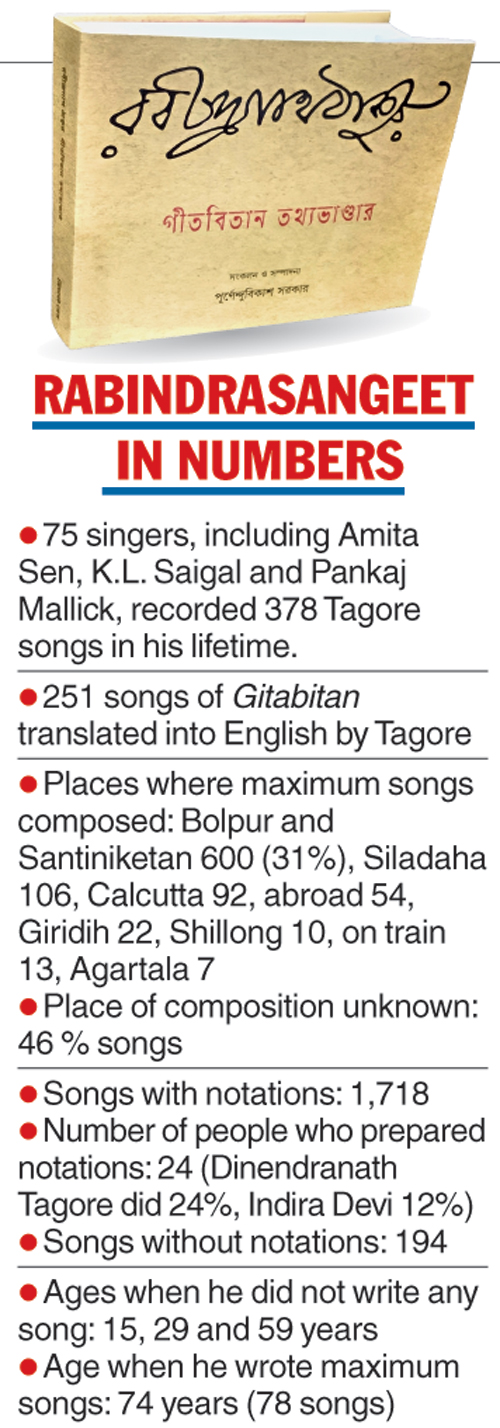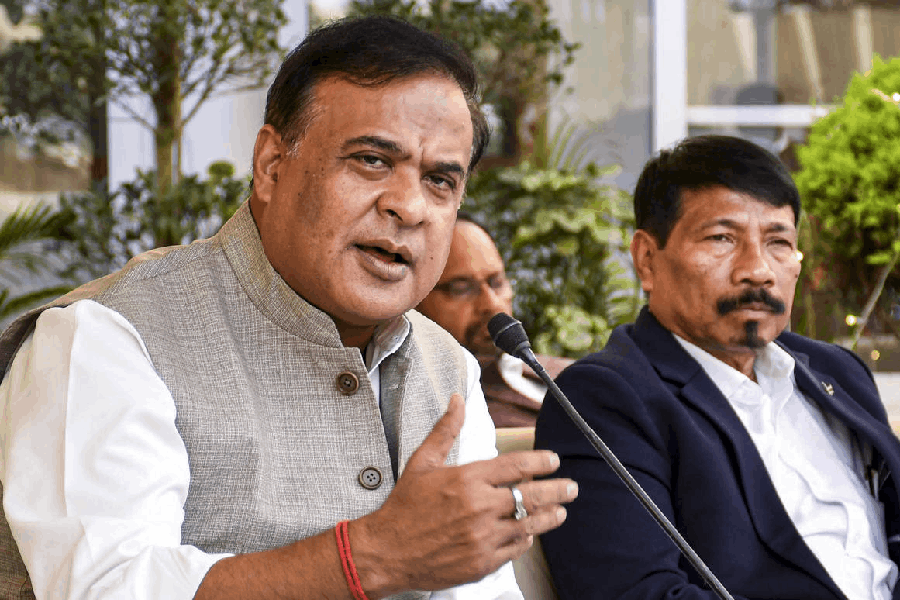Eye surgeon Purnendu Bikash Sarkar, a resident of Purbachal Housing Estate, has completed another seminal work of research on Rabindranath Tagore. He has compiled a wealth of information on songs composed by Tagore which has been presented in a book, titled Gitabitan Tathyabhandar. The book was launched on January 8 and has been in the market since December 18.
“The publishers (Ananda Publishers) just informed me that the first print is exhausted. Even I did not expect it would get such immediate acceptance,” said Sarkar, seated in his Purbachal 4R apartment, on Saturday.
The 860 page book is quite a tome, weighing 1.97kg. It is divided into six chapters.
The first has an alphabetical list of all the 1,912 songs, mentioning the order in the sequence in Gitabitan, the place where it was composed, the poet’s age at the time, the time of composition in both Gregorian and Bengali calendar, the volume in which the musical notations appear, the name of the person who prepared the notations and the predominant raga or the taal of the song. In case the song was recorded in Tagore’s lifetime, that too is mentioned.
The second chapter is on 204 dialogues from dance drama or plays which have been set to tune. “Lines like Ajke sobai mile korbo looter bhag from Balmiki Pratibha can hardly be sung by themselves but Dinendranath Tagore has left the notations behind. Such lines have been listed separately,” Sarkar explained.
The third chapter is a chronological list, starting with Gaganer thale rabi chandra dipak jwale, Tagore’s first composition when he was 13. “Swami Vivekenanda had sung it for Sri Ramakrishna. It is included among the 16 Tagore songs in Sangeet Kalpataru, Swamiji’s compilation of songs. The song was recorded for the first time when we brought out Gitabitan Archive,” said Sarkar. Gitabitan Archive is an interactive DVD compiling Rabindrasangeet recordings that Sarkar had brought out in 2007. The chapter ends with Hey nutan, dekha dik aarbar, the last song Tagore composed two days before his 80th birthday in 1941. He died that year itself.
Chapter 4 has the 243 songs adapted from other sources. For example, Tumi apni jagao morey is adapted from Jago mohan pyare, found in Pandit Vishnu Narayan Bhatkhande’s book.
Sarkar recalls the lengths he went to in cross-checking references. “In high summer, I wore woollens to work in the freezing cold of the rare books section of the National Library. They have copies of Dharmasangeet, Rabichchhaya and two volumes of Kabyagrantha, in which many of Tagore’s songs originally appeared. Visva Bharati had the manuscripts of Majumdarpnuthi and Malotipnuthi . Sankhada (Ghosh, the eminent poet and Tagore scholar) helped me with books from his collection, like the first edition of Gitabitan, printed in 1938, and the first volume of Poems, which has 110 of Tagore’s poems he had himself translated into English.”
In the fifth chapter, Sarkar has listed the 96 songs which have been listed twice in Gitabitan with slightly varying lyrics. If one version is Yamini na jete jagale na, another starts with Kyano yamini na jete...
The last chapter is of Tagore books rich in music. “Of them, 84 were published in his lifetime and seven afterwards.”
A comment by singer Suchitra Mitra was the catalyst for the book, Sarkar says. “When I took Gitabitan Archive to her in 2006, she said it should be a book too. That was on my mind ever since.” He ran into umpteen technical troubles over the use of Bengali fonts that stalled the projects for years. Bibhas Dutta of BE Block helped him sort out the issues.
It was 2013 when he had first taken the manuscript to the publisher. Printing finally started before Durga puja last year. “On December 8, I was told that the book was ready.”
Ghosh launched the book at a programme in central Calcutta on January 8. In a written statement in Bengali, he recalled being awestruck by an ophthalmologist bringing out Gitabitan Archive some years ago. “I had heard how after 9pm he withdraws from healthcare and devotes himself to Tagore research till 3am...”
Despite two other seminal works being published in recent times — Gitabitaner Jagot by Subhas Choudhury and Gitabitan Mahakosh by Prabir Guhathakurta — Sarkar’s work, he felt, retains significance because of the systematic approach. “All the information is presented in a tabular form which makes it easy to access...,” he pointed out.

The Telegraph










